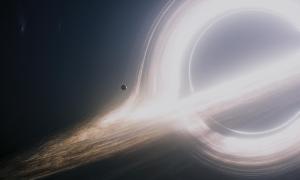Mislav
Baloković
YCAA Prize Postdoctoral Fellow
Yale Center for Astronomy & Astrophysics

Geometry of AGN Obscuration Revealed by Hard X-ray Spectroscopy
I use broadband X-ray spectroscopy (0.3--200 keV) to constrain the geometry of the parsec-scale gas and dust that is usually referred to as the AGN torus. Obscuration of type 2 AGN is usually attributed to the torus. The key spectral features arising from scattering and fluorescence in the torus gas, emission lines of iron and the Compton hump, both lie within the hard X-ray bandpass of NuSTAR (3--79 keV). Because of the unique sensitivity of NuSTAR in comparison to previous hard X-ray instruments, it is now possible to constrain some structural parameters of the AGN torus to unprecedented level. For this purpose, I calculated new spectral template libraries for fitting broadband X-ray data, described in my Ph.D. thesis, Baloković et al. (2018), and Baloković et al. (2019), and available on this page. A major part of my Ph.D. thesis is the analysis of the torus structure in a large sample of ~120 AGN in the local universe, revealing for the first time from the X-ray band, that a diversity of torus geometries exists within the local AGN population. While working on this large survey, I studied the structure of obscuration in small samples of highly obscured Compton-thick AGN, which are thought to be observed through the thickest part of their tori. They are notoriously difficult to find in the high-redshift universe, despite accounting for a significant fraction of the total black hole growth in the cosmic past, so it is only possible to use the local sources to better understand their properties.
- broadband X-ray spectroscopy of nearby heavily obscured AGN: Baloković et al. 2014, Bauer et al. 2015, Koss et al. 2015, Koss et al. 2016a
- tools for selection and characterization of Compton-thick AGN: Brightman et al. 2016, Koss et al. 2016b, Boorman et al. 2018, Marchesi et al. 2019
- additional torus constraints from multi-wavelength data and variability: Rivers et al. 2015, Farrah et al. 2016, Masini et al. 2016, Lanz et al. 2019

Physical Parameters of AGN Coronae
Intrinsic X-ray emission of AGN is thought to be produced by hot plasma in the vicinity of the supermassive black hole via upscattering of UV radiation from the accretion disk. However, little is known about the geometry and physical conditions in this compact X-ray emission region, usually called the corona. The high sensitivity of NuSTAR in the hard X-ray band allows the high-energy cutoff, which encodes information about the temperature and opacity of the corona, can be measured with unprecedented precision. Moreover, spectral components corresponding to different parts of the accretion flow can be separated out reliably. For example, I led a study where the high-energy cutoff was determined to within 5% (within 20% including systematics) for the obscured AGN MCG -05-23-016, and I participated in a number of similar studies of other bright AGN. I also provided the largest number of reliable measurements of the high-energy cutoff from the NuSTAR survey of the local obscured AGN population that I carried out as a part of my Ph.D. thesis. I currently work on correlating properties of coronae determined from the X-ray band with observations in the submillimeter band using the SMA.
- coronal parameter measurements: MCG -05-23-016 (Baloković et al. 2015), 3C 390.3 (Lohfink et al. 2015), NGC 5506 (Matt et al. 2015, Baloković et al. 2019), sample of type 1 Seyferts (Kamraj et al. 2019)
- summary of coronal measurements from NuSTAR and their implications: Fabian et al. 2015

Relativistic Jet Physics: Radio-loud AGN and Blazars
A fraction of AGN launch relativistic jets stretching from their innermost regions out to supergalactic scales, making them radio-loud. Physics that govern production, propagation and maintenance of these jets, and the reasons for why only certain AGN posess powerful jets while others do not, represent unresolved open issues. One approach to understanding these jets better is to trace the temporal evolution of spectral energy distributions of blazars -- AGN with jets favorably oriented close to our line of sight, enhancing the relativistic effects. In 2012/2013 I had a leading role in the 5-month multi-wavelength monitoring campaign on the prototypical TeV-emitting blazar Mrk 421, focused on an extensive study of its spectral variability with NuSTAR, Swift, Fermi, VERITAS, MAGIC, optical and radio observations. This rich dataset produced several publications (see the links below), two of which I led, others I participated in, and several still in preparation. Throughout graduate school I contributed to studies of nearby blazars such as BL Lac and 3C 279, high-redshift blazars, and to monitoring blazars at radio frequencies (OVRO, MARMOT) and in optical polarization (RoboPol). For my M.Sc. thesis I worked on constraining the shape of the radio-loudness distribution in SDSS-selected quasars and its evolution over cosmic time. Recently I became interested in relativistic jets of narrow-line Seyfert 1 (NLSy1) nuclei, at least some of which appear to be scaled-down flat-spectrum radio quasars with lower black hole mass.
- Mrk 421 campaign in 2012/2013: Baloković et al. 2013, Hovatta et al. 2015, Baloković et al. 2016
- nearby blazars: 3C 279 (Hayashida et al. 2015), BL Lac (Wehrle et al. 2016), PKS 2155-304 (Madejski et al. 2016)
- high-redshift blazars: Sbarrato et al. 2013, Ahnen et al. 2015, Taglaferri et al. 2015, Ajello et al. 2016
- blazar monitoring programs: RoboPol, OVRO, MARMOT (e.g., Angelakis et al. 2016, Ramakrishnan et al. 2016)
- distribution of radio-loudness in SDSS-FIRST quasars: Baloković et al. 2012
- black hole mass and spectral energy distribution modeling for NLSy1: Landt et al. 2017, Kynoch et al. 2019